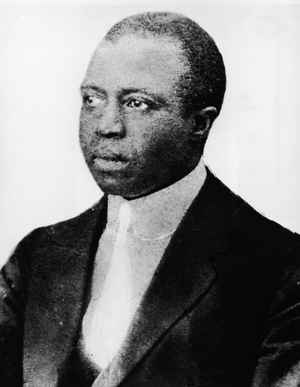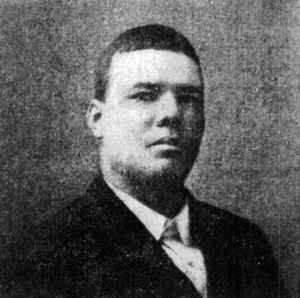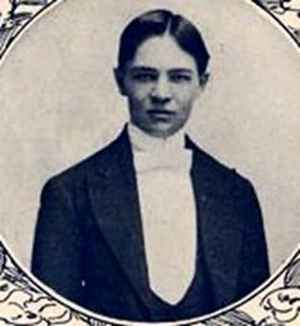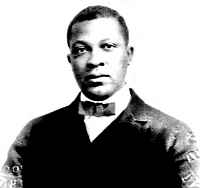

Ragtime rolled around prior to the 20th century, not to mock my later fashion statement, but to get transformed into jazz. Ragtime originated in the 1880's, largely by black musicians, in the southern and midwestern states, particularly around the Missouri region. It came to be as a mix of jigs and marches and was at first considered declassé, played more in bordellos than salons. During the 1890's, however, ragtime had become so increasingly popular that there were good livings to be made selling sheet music to a public of home pianists wishing to add something different to their repertoires of Chopin, something w a bit of beat now to compete with classical melodies. Ragtime's heyday was during the first decade of the last century, the music of the land in the glory days of President Teddy Roosevelt. Its period much corresponds with that of famed (and notorious) Tin Pan Ally in New York City where publishers peddled their sheet music. Wikipedia cites the first ragtime composition to be 'La Pas Ma La' (score) in 1895 by comic minstrel, Ernest Hogan.

Ernest Hogan
Source: Wikipedia
'La Pas Ma La' composed by Ernest Hogan 1895
Among the greatest ragtime composers and musicians were, by order of birth, Scott Joplin, Tom Turpin, Ben Harney and Joe Jordan.

Scott Joplin
Source: Britannica
Scott Joplin was born circa 1868 in Texas. first began publishing music in 1895. His were among the first piano rolls produced in 1896. The tunes by Joplin below are piano roll recordings at later dates than when composed. The pianists are unknown. Joplin's contributions to early American music brought him a posthumous Pulitzer Special Award in 1976, some six decades after his death in New York City on 1 April 1917:
'Maple Leaf Rag' composed by Scott Joplin 1899
'Strenuous Life' composed by Scott Joplin 1902

Tom Turpin
< Source: Music Timeline
Tom Turpin arrived to Savannah, Georgia, on 18 November 1871. At a height of six feet w 300 pounds to carry forth, he performed at piano raised on blocks over his impeding belly. Turpin died on 13 August 1922. ''St Louis Blues' below is recorded from a later piano roll. Again, the pianist is unknown. 'Harlem Rag' was his first published tune (1897), performed by Ann Charters some sixty years later:
'Harlem Rag' composed by Tom Turpin 1892
'St. Louis Rag' composed by Tom Turpin 1903

Ben Harney
Source: Study Com
Ben Harney was born in Kentucky on 6 March 1872 toward composing 'You've Been a Good Old Wagon' in 1895. None of his compositions were recorded, however, until some years later, though quite preceding his death by heart attack in Louisville, Kentucky on 2 March 1938. Neither the date nor vocalist of the recording below are certain:
'You've Been a Good Old Wagon' composed by Ben Harney 1895

Joe Jordan
Source: Amoeba
Joe Jordan never recorded either. Born in Cincinnati on 11 Feb 1882, he first published in 1902, 'The Century March' and 'Double Fudge'. The song below, 'That Teasin' Rag', was composed in 1909. It is played more than ninety years later in 2001 by Robert Darch:
'That Teasin' Rag' composed by Joe Jordan 1909
Venues important during the ragtime period were minstrelsy (blackface) and the vaudeville variety show. Minstrelsy in particular faded off as black musicians took the helm in jazz. Ragtime's decline, or transformation into new styles like jazz, occurred broadly around the time of World War I. Vaudeville got replaced by cinema once it arrived with sound in 1927 ('The Jazz Singer'). Sheet music and Tin Pan Alley began their decline, together with the piano roll, during the Great Depression upon radio and the phonograph becoming major mediums of musical expression. See the Library of Congress and Wikipedia for a broader discussion of ragtime.
Sources & References:
Scott Joplin:
Joe Jordan:
Ben Harney:
Ragtime Music History:
Tin Pan Alley:
Tom Turpin:
Further Reading:
Minstrelsy (blackface):
Vaudeville:
Classical Main Menu Modern Recording
hmrproject (at) aol (dot) com